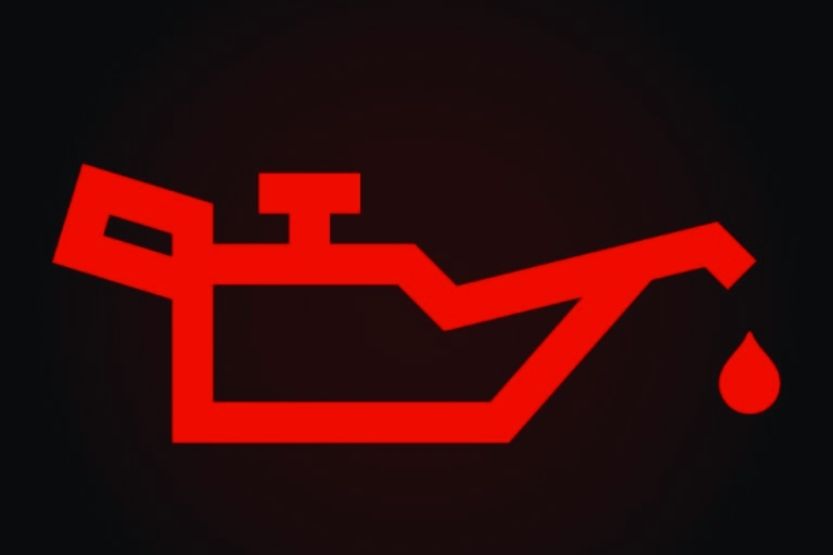It can be stressful when your car suddenly tells you you’re low on oil in the middle of a long trip. This is because, as any good driver would know, having enough oil in the engine is one of the most important things to keep in mind to keep your car running as smoothly as possible.
How long can you drive your car once your oil light comes on? Once your car signals that the engine oil is low, it would be in your best interest to change the oil within two weeks. At most, you should think about changing the tank’s oil before traveling 500 miles further.
If your car does not possess an oil change light, your model might have an oil pressure light. You’ll need to pull over and turn off the engine to cool it when this signal lights up. Negligence in doing this task may damage the engine due to volatile temperatures.
Read on to learn more about what the oil change light means, what you should do when it lights up, and how far you can drive from when it is turned on.
How Long Can You Drive with the Oil Light On?

Condict Oil Change Every 3,000 Miles
Car manuals often indicate that the ‘oil change’ signal turns on every 3,000 miles of travel. This means that the oil in the engine is starting to lose its friction-reducing qualities. So, you will have to replace it sooner or later.
Look Out for the Oil Change Signal
If it isn’t already specified in your manual, when the symbol for the oil comes alight, it means that you may need to change the oil in your engine. If you have done this recently, it may indicate that you need to top up the oil inside.
Pull Over and Let the Engine Rest
Once it turns on, pull over and let the engine rest, or call a towing service to help you. Otherwise, if you insist on keeping the car running, you run the risk of damaging your car engine.
Additionally, once the ‘oil change’ light switches on, you must change the oil within a week or two.
Drivers Can Now Differentiate Oil Change and the Oil Pressure Lights
In newer models of automobiles, manufacturers have made it so drivers can now differentiate the oil change light and the oil pressure light. Manufacturers also urge drivers to change the oil within 500 miles of travel once the ‘oil change’ light goes off.
As a driver, you should make it a point to regularly check your oil reserves and be prompt in keeping it well-stocked every time you drive out. Per the manufacturer’s instructions, regular oil changes are vital to keeping your car in tip-top shape.
Change the Oil After 5,000 to 7,000 Miles
A few years ago, drivers had to change the oil in the engine at around 3,000 miles. Technological advancements have allowed cars to go 5,000 to 7,000 miles before changing oils.
10,000 to 15,000 Miles If Drivers Use Synthetic Oils
These numbers can jump to 10,000 to 15,000 miles if drivers use synthetic oils.
Many of the numbers mentioned above are largely general guidelines regarding automobile care. Their numbers and the specific guidelines are subject to change depending on what car engine you’re using and what type of oil you’re using.
If you’re in doubt, always refer to your operator’s manual.
Again, How long can you drive your car once your oil light comes on? When the oil change light comes on, you can drive for about 2 weeks or 500 miles.
Why Is Your Oil Light On
For some newer models, there should be two signals that may indicate that you might need to change your oil or check on the pressure.
If a red light does come on, this often indicates a situation with your engine that you’ll have to address. Here are some possible reasons why this red light might appear on your dashboard:
- Low oil pressure in the engine is low
- Low oil level
- The oil pump needs replacement
- A faulty oil pressure
Once a red light does come on, it would be in your best interest not to ignore it.
Pull the car over and check the car once you can. Check the engine and verify any issues you need to address under the hood. Check your oil level with the dipstick. If the oil is below the minimum of the required amount, top it up before you start the engine again.
How to Top Up Your Engine Oil
It is beneficial for drivers always to have a spare canister to keep their oil. If you don’t have this in your car, you can always opt to visit a nearby gas station to have your oil refilled.
After getting topped up, turn on the engine and see if the red light still comes on. If it hasn’t lit, then it means that the engine has sufficient oil to go around to function smoothly. Double and triple-check your car for any further issues before driving away.
Again, how long can you drive with the oil light on? If your car’s oil light comes on, you only have around two weeks or 500 miles before the issue gets serious. It is best to have your car inspected by a mechanic as soon as possible.
Commons Signs of Low Engine Oil

Leaks
Check your engine regularly for leaks, especially when it is time to add or change your oil. Leaks are easy to determine since the car can leave puddles near the engine section where it has been parked.
Blue Smoke and Burnt Oil
Additionally, make sure to watch out for blue smoke that might come out of your car. This smoke might come from the exhaust pipe and smell like burnt oil from the car engine.
These are telltale signs of a leak. If one or more symptoms of a leak are present, make it a point to take your car to a trusted mechanic to have the car looked at.
What Happens When You’re Overdue for an Oil Change?
Why Is the Oil Light Still on After Putting Oil in?
If there are times that the red light does not turn off even after you topped up the oil in your engine, then a problem may exist elsewhere. Some cause of this may be that the engine’s oil pressure sensor might malfunction.
Damages that may cause this part to malfunction include the following:
- Dust accumulation,
- Oil pump issue,
- Disconnected from the engine, or
- Wear and tear.
Replace the part with an issue and install a new one to fix your oil light signal.
Benefits of Getting Regular Oil Changes
This is the part responsible if you’re going anywhere after all. The engine is the primary force that allows your car to be as fast or slow as you want it to be.
A car’s pistons give it the energy it needs to be able to move.
These pistons and their cylindrical casings consist of steel and, therefore, generate an incredible amount of friction in a short period:
1. Absorbs Heat and Lubricate Parts
From the statements above, we can infer that a car engine comprises many different parts, often moving in conjunction with one another. As these parts move, they generate friction, and by causing friction, they generate heat.
The oil can absorb this heat and lubricate the parts that are constantly rubbing against one another. Having oil in the engine thus prevents it from overheating.
If the lubricating agent is not introduced to these particular parts, The pistons will stick to the cylinders in a matter of minutes. This will result in your car being unable to move forward or backward.
Various contaminants can get inside the engine as it continues to work, so it is important to have the oil as a cleaning and lubricating agent across the mechanism.
The fuel that circulates throughout the engine doesn’t turn black because it’s getting burned by the heat. We have already established that engine oil has properties that make it highly capable of absorbing the engine’s heat, which helps it cool down.
2. Collects Dust, Debris, and Other Contaminants as the Oil Circulates
The oil inside the engine turns darker because as the oil circulates throughout the machine, it collects dust, debris, and other contaminants that may harm the engine. This is why it is important to change the oil in your engine’s reservoirs regularly.
3. Other Benefits
Other various benefits you may enjoy if you keep being diligent in maintaining and replacing your oil in the car engine are:
- The car can function for a longer period than its average lifespan. Keeping the car in good condition may also allow selling for a much higher price when you decide to let the automobile go.
- A regular oil change can enhance engine performance.
- Fewer carbon footprints and fewer emissions.
- Increased mileage.
- Overall cleaner feel and function.
What Happens If You Neglect to Change Your Oil?

Going too long without changing the oil in your car can negatively impact your automobile. If the engine goes too long without getting topped up, it will use and burn up the remaining oil.
We have established that the engine’s oil is designed to be a lubricating, cleaning, and cooling agent for the entire engine. So, it must be fresh, clean, and free from contaminants.
Not regularly changing the oil in the engine and forgetting to top up your oil regularly may cause your engine to shut down and fail. Drivers should be extra careful when dealing with high-performance engines as well.
If you neglect the maintenance of the oil in the engine, chances are your polluted emissions will catch the eyes of authorities, resulting in a penalty. The worst-case scenario would be that your engine will fail during one of your drives, overheat, and cause a dangerous fire.
Should You Let the Engine Cool Before Adding Oil
How to Extend Oil Change Intervals
Usually, there is no definite answer to this question as the answer depends on what engine and oil you’re used to dealing with. Once universal answer for this is that synthetic oil can significantly reduce the need to change the oil in a car’s engine.
Using synthetic oil for your car engine will give you the following benefits:
- Less frequent oil changes
- Increase the fuel efficiency of your engine
- The engine will become more resistant to coagulation
- Fewer carbon emissions
- Cleaner, much tidier engine
- Improved performance in colder climates
Conclusion
It is recommended for drivers to schedule and keep track of their oil changes every week or two. Once the oil change light goes on, it is advised to change the oil in your engine before the car hits 500 miles.
Doing this will help maintain your car engine and prevent long-term damage.








![Read more about the article MS-6395 Oil List [What are They and Their Benefits]](https://roadsumo.com/wp-content/uploads/2021/12/MS-6395-oil-list-300x200.jpg)
![Read more about the article Is Shell Gas Good for Your Vehicle? [Shell Gas Review]](https://roadsumo.com/wp-content/uploads/2022/03/is-Shell-gas-good-for-your-vehicle-300x200.jpg)